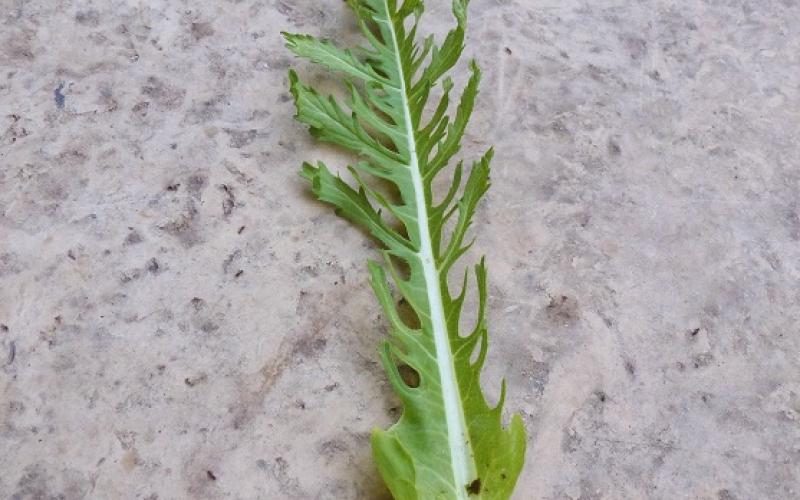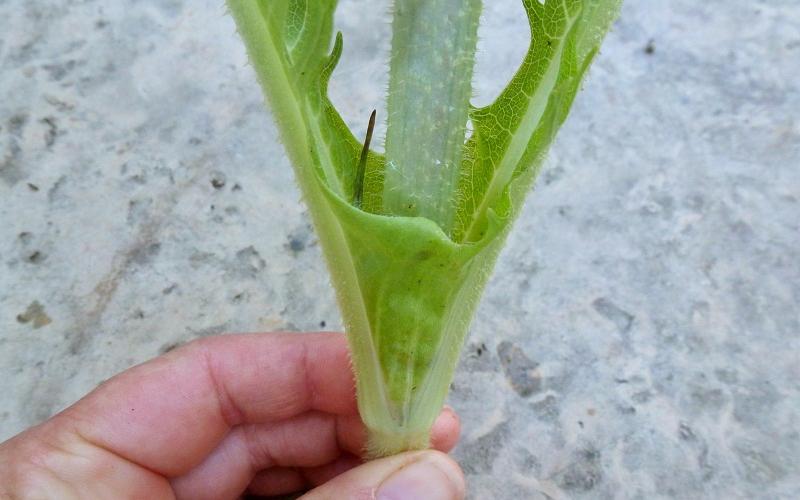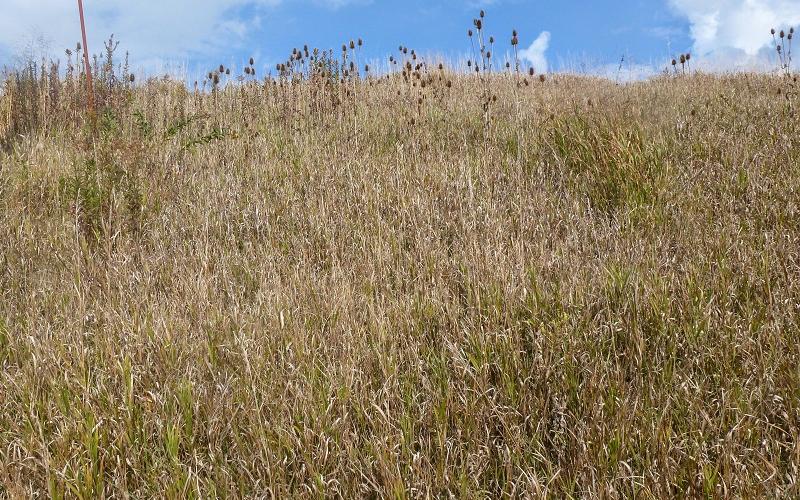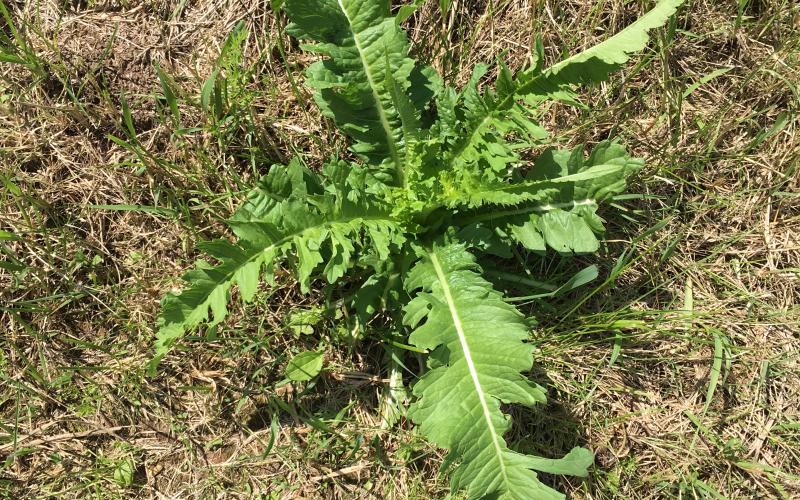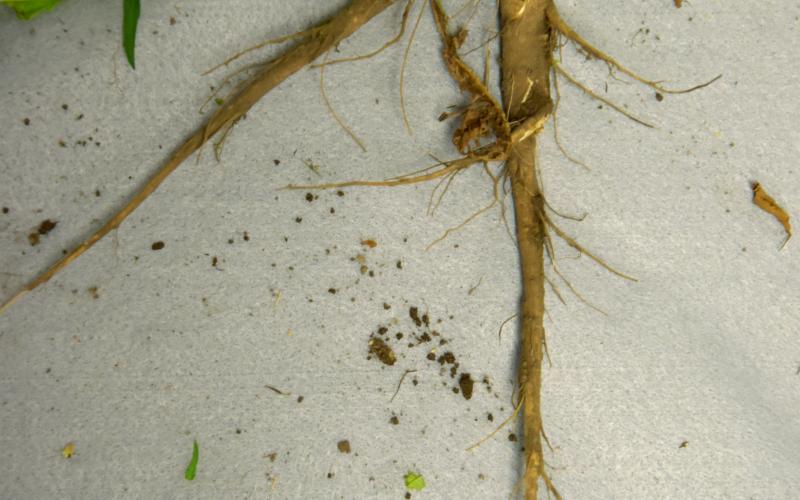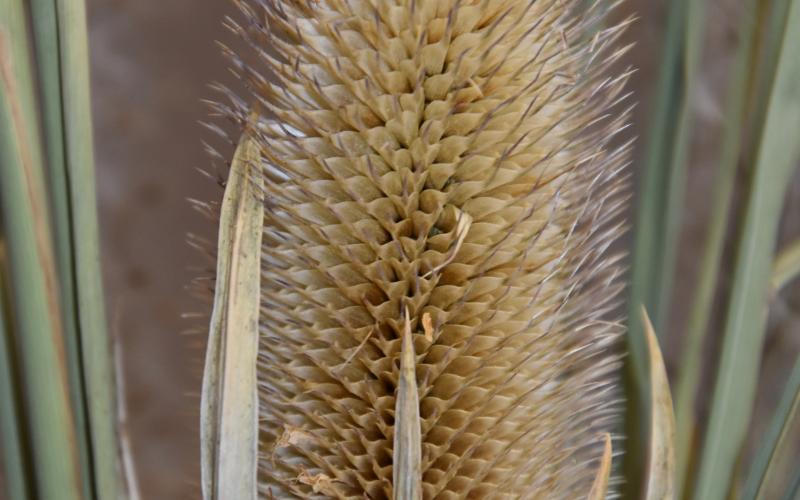Common name: Cutleaf Teasel, Cut-leaf Teasel
Scientific name: Dipsacus laciniatus
Related species: Fuller's Teasel (D. sativus), Common Teasel (D. fullonum)
Legal Status
All above and below ground parts of the plant must be destroyed. Additionally, no transportation, propagation, or sale of this plant is allowed. Failure to comply may result in an enforcement action by the county or local municipality.
Background
Cutleaf teasel is a threat to Minnesota’s pastures and natural areas. Native to Europe, teasel was introduced as early as the 1700s, for both industrial and ornamental purposes. The fabric industry placed teasel on spindles, spinning fabrics across them to raise the nap of fibers. Gardeners planted cutleaf teasel for its stately form. Flowers and seedheads are used in dried floral arrangements. Cutleaf teasel escaped cultivation and now displaces desirable vegetation. The related common teasel was similarly used and was also a source of wool dye.
Description
- Teasels are monocarpic perennials (produce seed only once in a lifetime) that form basal rosettes for at least one year until enough resources are acquired to send up flower stalks. Rosettes develop oblong, hairy leaves and large tap roots.
- The small, dense white flowers occur on oval-shaped, terminal heads enclosed by stiff, spiny bracts. Flower stalks may grow to over 7 feet in height. Blooming occurs from July through September. After flowering and seed production, the plants die.
- Leaves on the flowering stalks are large, deeply-lobed, opposite, and wrap around the stem forming cups that can hold water. Both the leaves and stems are very prickly.
- Teasels also exhibit a characteristic shared by many weedy species – elasticity – that enables it to quickly produce abundant seeds on very short stalks after mowing.
Habitat
Cutleaf teasel grows in open, sunny habitats such as roadsides and pastures. It prefers disturbed areas, but can invade high quality areas such as prairies, savannas, seeps, and sedge meadows.
Means of spread and distribution
Teasels are prolific seed producers with most seed falling near the parent plant. The result is expansion of existing infestations. Long range dispersal starting new infestations can occur by a variety of means. Seed can float along riparian corridors, drift with the snow, journey along transportation corridors and recreational trails from seed shed from soil on tires and vehicle undercarriages. It can also be spread on mowing equipment. Teasel has been noted in or near graveyards, spread by seed from dried floral arrangements. Birds can consume, then distribute teasel seeds. It can be found in all northern states from Massachusetts to Colorado and in Oregon. In Minnesota, cutleaf teasel is reported in multiple counties including Blue Earth, Carver, Dakota, Fillmore, Freeborn, Hennepin, Houston, Mower, Olmsted, Ramsey, Steele, Wabasha, Washington, Winona and Wright.
Impact
The teasels form large dense stands that choke out desirable plant species. This can reduce forage, wildlife habitat, and species diversity.
Prevention and management
- Do not plant teasels or intentionally move soil, including soil adhered to recreational vehicles or lawn/garden equipment, which may contain seed of this species. Do not use seedheads in floral arrangements.
- Infestation sites will need to be monitored and treated repeatedly until the seedbanks are depleted. Teasel seedbanks remain viable for a relatively short time, 3-5 years. With diligent control, eradication may be feasible within this time frame.
- Hand-pulling and digging are management options for small infestations, but the large, fleshy taproots are difficult to remove. Flowers and seedheads will need to be bagged and disposed of.
- Frequent mowing throughout the growing season that prevents flowering can deplete food reserves in the taproots and reduce stands over time. It is important to monitor the site and ensure that plants do not flower on short stalks. Also remove any stalks that were flattened, but not cut by the mower.
- This species also responds favorably to annual herbicide treatments. For specific herbicide recommendations, contact your local University of Minnesota Extension agent, co-op, or certified landscape care expert. There are several businesses throughout the state with certified herbicide applicators that can be hired to perform chemical applications.
- Biological control is not a management option at this time, but is in development.
